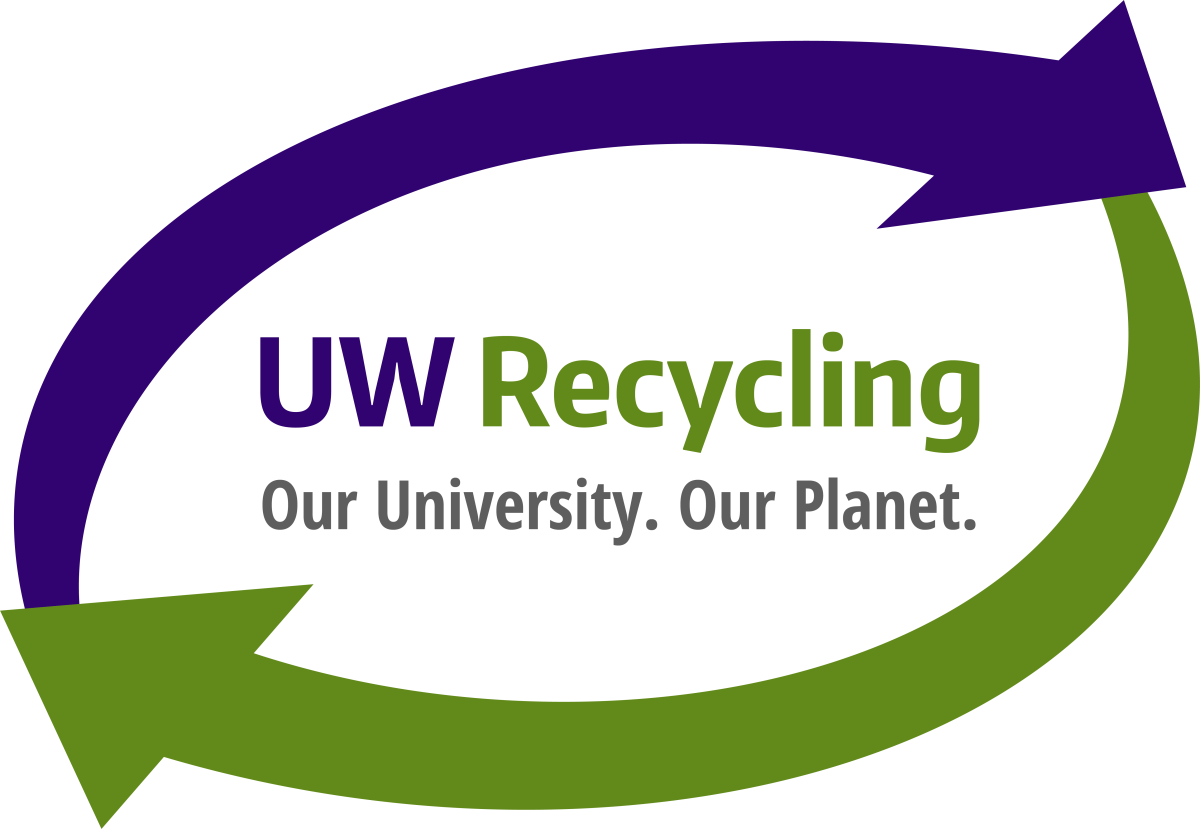
Guest submission by Adam Fehn, UW Recycling Program Coordinator
Once you become familiar with being part of a campus community that's renowned for its sustainability practices, it can be hard to believe that a formal recycling program at University of Washington was established only 26 years ago. Thanks to several key student-lead initiatives, UW Recycling eventually grew to become a team of 14 administrative and operations members that support the entire campus every day.
The seeds were first planted in 1970, when the student group known as Committee on the Environmental Crisis planned and staged the "world’s first trash-in" in front of UW Student Union Building. Members of the campus were encouraged to bring trash to sift through the contents in order to determine what could be recycled. Recyclable materials were then sent back to the manufacturers with a request that they reuse or reprocess it.
Fast forward to 1971 and we find the first record of students leading the effort to collect recyclables from campus dormitories in collaboration with UW Physical Plant Department (which brought the recyclable materials to the transfer station).
"The waste products averaged about 2,800 pounds a week," said James Bernoski, the former UW manager of property and transportation, in a 1971 Seattle Daily Times article. By 1973, the Physical Plant had expanded its recyclables collection program to include computer tabs and printout paper from various offices around campus. Two years later in 1975, the plant started collecting ledger paper and newsprint.
Student recycling efforts continued to grow slowly throughout the '80s. By 1989, these efforts gained a big boost when the UW's Institute for Environmental Studies spent over a year producing a study describing how an official recycling program on campus could be created. The Institute would eventually garner the support of the Washington State Public Interest Research Group (WashPIRG). Together the two groups produced a recycling implementation program and submitted a proposal to the UW administration. The Associated Students of the University of Washington (ASUW) then stepped in to support the program and started promoting recycling by placing the first standardized recycling bins in six buildings around campus: HUB, Kane Hall, Meany Hall, N-2 parking lot (near Denny Hall), Sieg Hall and South Campus Center.
In 1990, the ASUW was able to expand its efforts when it was awarded a federal grant of $35,000 by the Environmental Protection Agency (EPA). In a Seattle Post-Intelligencer interview that year, student body president Heidi Wills said "students will use their EPA grant to hire a recycling education director and to develop promotional materials." She went on to say that "students have been leading the recycling movement on campus," and ultimately felt it was the University's responsibility to provide students the opportunity to recycle.
At the early stages of the official recycling program, Christine Knowles (former director of technical services), described the UW's 6% recycling rate in a 1990 Seattle Post-Intelligencer interview as "a leader in recycling among state agencies."
Today's recent estimates tell us that the University is recycling and composting about 63% of the waste generated by the campus community, as listed in UW Recycling's 2016 annual report. To accomplish the ambitious goal of 70% waste diversion by the year 2020, UW Recycling works with a multitude of student groups including EcoReps, the Student Association for Green Environments (SAGE), and Students Expressing Environmental Dedication (SEED) to promote UW's sustainability mission and help the student population learn how to properly recycle and compost items on campus.
Some of UW Recycling's most impactful student outreach campaigns include SCRAM and Husky Neighborhood Cleanup, where UW Recycling commits to making sure that students have the opportunity to dispose of their unwanted items in a way that benefits the campus and the environment. You can find UW Recycling at various outreach events throughout the year—we relish every opportunity we get to interact with the student body. Without the efforts of so many dedicated huskies in the past, our university would not be what it is today—a leader in recycling and sustainability.